PROBLEMS ON GEOMETRY PROPERTIES OF PARALLELOGRAM WITH DIAGONALS
Properties of Parallelogram
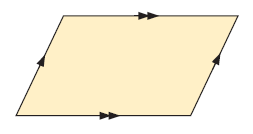
In parallelogram, opposite sides are parallel and equal.
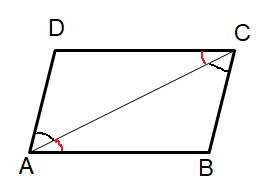
Here diagonal is like a transversal for parallel lines. Then alternate interior angles are equal.
That is,
∠DAC = ∠ACB, ∠DCA = ∠CAB
Since the opposite sides are parallel, we observe the same side interior angles.
∠DAB + ∠ADC = 180
∠DCB + ∠CBA = 180
Conclusion :
- Opposite sides are equal
- Opposite angles are equal
- Sum of consecutive interior angles will be 180 degree.
- Diagonals will bisect each other.
Problem 1 :
Find angle measure ∠YWX.
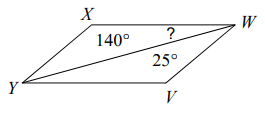
Solution :
Opposite angles are equal.
∠X = 140
∠V = 140
∠V + ∠WYV + ∠VWY = 180
140 + ∠WYV + 25 = 180
165 + ∠WYV = 180
∠WYV = 180 - 165
∠WYV = 15
∠YWX = 15 (alternate interior angles).
Problem 2 :
Find ∠KLJ.
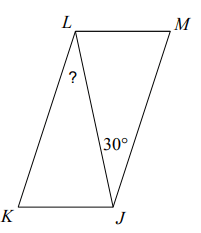
Solution :
In parallelogram, diagonal is a transversal of parallel lines.
∠KLJ = ∠LJM
Alternate interior angles.
∠KLJ = 30
Problem 3 :
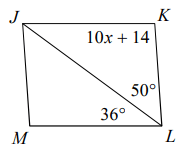
Solution :
∠MLJ = ∠LJK
In the triangle JLK,
∠JLK + ∠LKJ + ∠KJL = 180
50 + 10x + 14 + 36 = 180
10x + 14 + 86 = 180
10x + 100 = 180
10x = 180 - 100
10x = 80
x = 80/10
x = 8
Problem 4 :
FH = 14, QH = 2x - 13
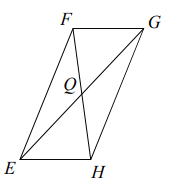
Solution :
In a parallelogram, the diagonals will be equal. Diagonals will bisect each other.
FH = 2QH
14 = 2(2x - 13)
14/2 = 2x - 13
7 = 2x - 13
2x = 7 + 13
2x = 20
x = 20/2
x = 10
Problem 5 :
CJ = 5 + 3x, JE = 2x + 11 and find CJ.
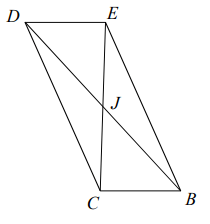
Solution :
CJ = JE
5 + 3x = 2x + 11
5 - 11 = 2x - 3x
-6 = -x
x = 6
Applying the value of x in CJ = 5 + 3x
CJ = 5 + 3(6)
= 5 + 18
CJ = 23
Problem 6 :
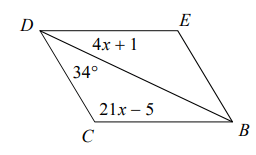
Solution :
∠EDB = ∠DBC
∠DBC = 4x + 1
∠DCB + ∠CBD + ∠CDB = 180
21x - 5 + 4x + 1 + 34 = 180
21x + 4x - 4 + 34 = 180
25x + 30 = 180
25x = 180 - 30
25x = 150
x = 150/25
x = 6
Recent Articles
-
Finding Range of Values Inequality Problems
May 21, 24 08:51 PM
Finding Range of Values Inequality Problems -
Solving Two Step Inequality Word Problems
May 21, 24 08:51 AM
Solving Two Step Inequality Word Problems -
Exponential Function Context and Data Modeling
May 20, 24 10:45 PM
Exponential Function Context and Data Modeling